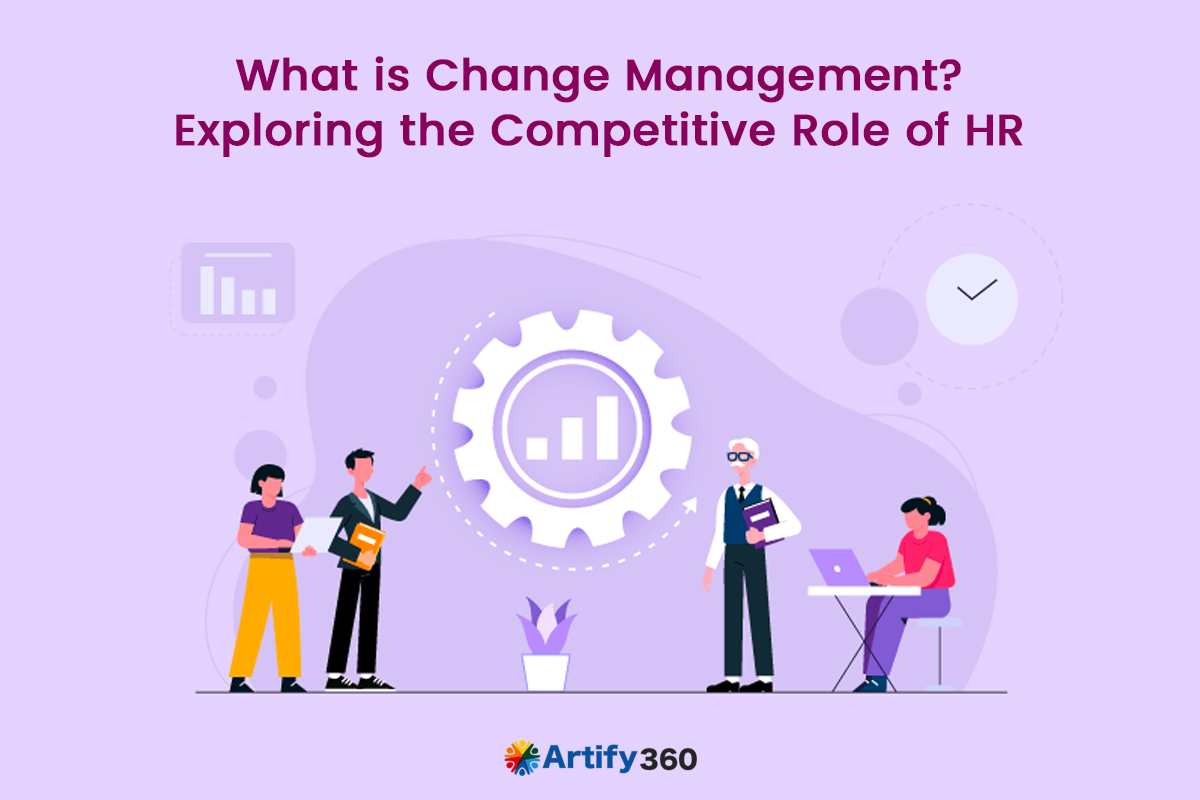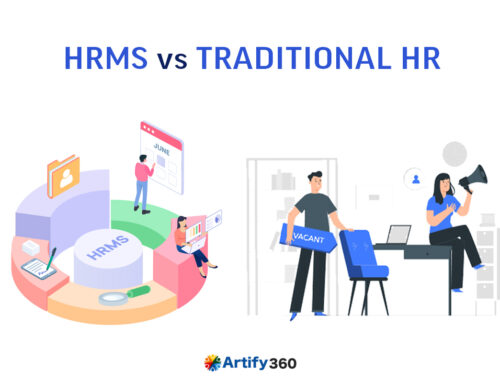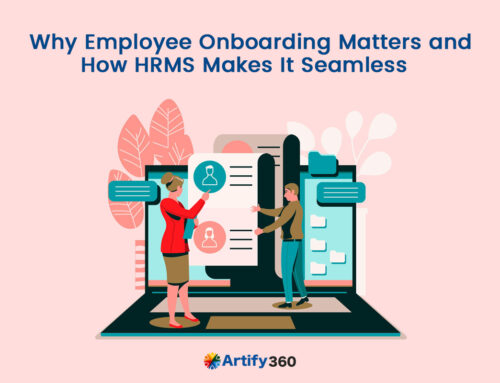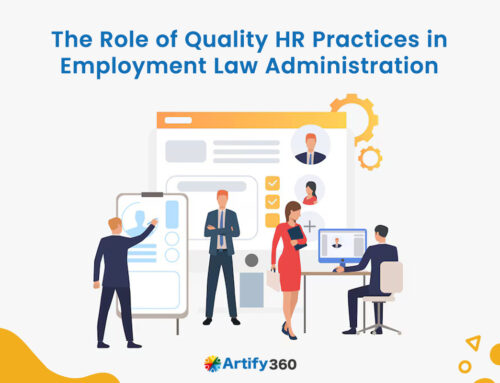The excellent management of HR operations solutions and services in an organizational setting cannot be underestimated. It is directly proportional to performance management, business productivity, operational efficiency, and employee engagement. Of these, the connection and collaboration that the HR division offers the company resources is a dynamic and vibrant factor.
When we are talking about employee engagement considerations, one of the crucial considerations is the topic of change management. It simply refers to the quality input of efforts from the HR personnel to the organization’s resources to boost their adaptability and transition.
An organization will change over time. However, without the right practices in place, your employees may get lost in the mix. This article aims to explain the route of bringing about change management in business models to create a responsible workforce that adapts to the changing organizational demands.
The post focuses on the roles and responsibilities of HR departments in delivering quality solutions to this incredible operations management process. It helps you learn about the implementation steps, benefits, and popular examples of change management in businesses.
You can also learn about the role of digital technology and software solutions in creating an effective change management model. We will guide you through the whole domain of change management to elevate your employee management skills and potential performance improvement.
Defining the Concept of HR Change Management
The core competencies associated with HR change management are a unique and exclusive feature. It strictly refers to the set of activities undertaken by your HR team to enable your employees to align with the organization’s workflow or operations transformation. It could be deployed over a period or in a single stretch depending on your business requirements.
Most companies prefer a custom format to ensure the delivery of the operations changes in organizational processes. The specific change could occur in any aspect of your company’s business functions. Some of the major categories for you to consider are business process evaluation, operations structure evaluation, organizational policies, and work culture.
Once you find the balance after transformation or disruption, the next step is to create and manage a systematic HR change model. Helping your employees adopt is one of the most important measures for you to get active assistance in the path forward. It can help maintain an optimal level of productivity and performance.
The change management process in your organization should follow consistent steps. This approach helps you maintain a credible branding support system for your organization. It is important to keep your resources motivated at all times with the right tool and platform provision for change management programs.
One of the primary things that you need to consider is the concept of employee fatigue. When continuous change occurs in the organization, your employees may feel stressed without the right amount of support and resources to cope with the HR operations model. According to proven reports, more than 80% of your employees will struggle with change if they don’t have the suitable tools and technologies to adapt.
Roles & Responsibilities of HR Personnel to Deliver Change in Companies
An HR professional plays a key role in dealing with the top-notch management of employee adaptability to organizational changes. The major roles and responsibilities can be summarized as follows:
Supporting your employees
The primary purpose of HR operations management should extend to the branch of supportive resource engagement prospects. It could help your organization to get active and essential support during times of change.
Keeping the balance
The evaluation of HR balance is necessary for the organization to experience a key alignment between incoming changes and employee responses. HR leaders should strive to keep this feature alive in companies.
Analyzing the scope of change
When a new change is implemented in the firm, the HR personnel must analyze and understand the scope and potential of the same. It helps the organization to adapt well to the duties related to the change.
Evaluating the results
A comprehensive evaluation of the results should be monitored to get optimum support regarding the incoming change or transition.
Maintaining compliance values
It is through the efforts of the HR team that the different compliance norms and regulatory policies related to the new changes are kept intact.
Forecasting future performance
Performance forecasts of existing employees are necessary for the organization to determine how they will excel in the upcoming changes. It is the primary duty of HR managers.
Communicating all updates
Every single update related to the HR policy of the latest changes should be communicated to the organization’s resources by the concerned HR personnel.
Providing training and development
Employee training and development is necessary for HR teams to get active support from human capital resources. Your purpose is to train the employees about the various learning resources available for the specific change.
Tracking and reviewing employee alignment
All changes should undergo regular tracking and reviewing to get the best benefits in employee alignment from an organizational perspective. HR teams oversee this process.
Examples of Change Management for Businesses
It is better to consider and understand some of the change management scenarios in your organization to stay on top of potential use cases and scenarios. Have a look at the probable examples below:
Change in policies
One of the surefire changes that could occur is related to your organization’s policies. It sets an exemplary model on the part of your company to create a well-known policy change by including every resource in the organization.
Merger and acquisition plans
When your company goes through merger or acquisition plans, it could create benefits for your organization from a business perspective. The best way to explore this change is to help your internal and external resources to get adapted to the different variables in a fresh scenario.
Change in leadership and management
When the leadership and management roles of your system change, it could offer you support in the domain of core business proportions. The optimum method of creating value in this model is to go for a leadership change with all your resources onboard the platform.
Bulk layoffs
Mass or bulk layoffs are part of an organization’s changes. It could prove problematic to your core business model if you cannot connect with a top-notch system to cover those operations. The optimum method of dealing with this change is to prepare your employees to manage the layoffs or professional terminations with valuable support.
Product or project changes
Organizational changes could extend to different products or projects that your business handles over the long term. The optimum method for adding them to the bigger workflow picture is to optimize the resource management process to deal with the changes feasibly.
Steps to Implement Change Management in Your Organization
The measures to create change management in your business are numerous. All you need to do is follow a simple, strategic route to create the best implementation impact. Check those steps out as follows:
Identifying the need for change
The primary step in the change management process is the identification and analysis of the possibilities for different changes to the organization. It varies according to different business models present in the market.
Preparing the organization for change
You should ensure the delivery of change management to your organization by ensuring the supportive role of operations. The imperative step here is to prepare your organization to embrace changes in the model.
Implementing the change
The next step is to proceed with the actual change implementation for your organization. It can help your business model to get active assistance and valuable change support that can improve your core operations.
Involve changes to the company culture and vision
When fresh changes happen in an organization, an ideal step is to imbibe them as part of the company’s culture, mission, vision, workflow ideals, and core values.
Train and develop your employees to adapt
Perhaps the most important step is the adoption of essential training and development modules for your employees, where they can learn about the different changes in the business model. They can adapt accordingly and embrace the different changes easily.
Embrace the intended impact in the bigger picture
You might have had an effective and impactful target goal in mind when you proceeded with the change management step. Once everything is in place, the next step is to adapt to the desired impact and get optimum results.
Follow up on the desired results with quality feedback
The final step is the introduction and inclusion of various feedback and review steps to get ideal values and parameters that can match the output that your organization seeks effectively. This should be a consistent process with chances for improvement in the employee voice generation regarding all organizational steps.
Benefits of Change Management for Firms
Utilizing change management in the appropriate proportion can offer a whole host of advantages for your organization. Some of these include:
Boost in employee engagement
One of the optimum steps that can evaluate the best benefits for your organization is the involvement of an effective employee engagement step for your business model. Ideal and efficient change management can bring value in this regard.
Better productivity and HR performance
Business productivity and operational performance are core factors that can add significant value to your business functions. Change verification in the right mode can ensure this merit for your business.
Aids in a smoother business transition
The valuable addition of business transition and corresponding support is a good function that can be feasibly managed by the existing change variables in an organization.
Reduces cost and time
With the right application of changes, you can optimize the time and cost associated with a fresher business model. It works for the general welfare of the organization.
Enhances risk assessment
As an organization, one crucial step is to work with risk assessment steps and measures. You can get optimum support in this case with the help of effective change adoption steps.
Lowers resistance to change
Embracing changes in a systematic model could be beneficial for your organization to get active support in the management of resistance on behalf of your resources to new policies and parameters.
Enables employee morale and satisfaction
Working with the core principles of employee morale, satisfaction, and experience generation are important for any organization. Employees can thrive in this regard when dealing with newer changes in the firm.
Faster navigation of business changes
The easier navigation of the business model’s fresher innovations and perspectives is important for the organization to thrive. You can enable it with the support of core changes made to the existing business model.
How Can You Use Artify 360 HR Software to Deploy Change Management Strategies?
The usage of quality HR payroll software solutions in deploying a change management model is of the utmost significance. We present to you Artify 360 that offers optimum support in the domain of change management and adaptation.
Artify 360 cloud HR software includes options for customization that can be streamlined to provide optimum support to your organization’s change administration and employee responses. Our product helps you prepare your employees to manage the level of changes in the organization.
Artify also promotes an engaging and empowering environment to assess and facilitate training and development for your employees. It helps them with proper communication techniques and strategies to boost the employee engagement rates to sync with the organizational changes.
Instead of general HR software systems opting for selective attributes in the HR domain, Artify covers all change-related tasks. We go all in to offer you a tailored and professional change management experience in your business model.






